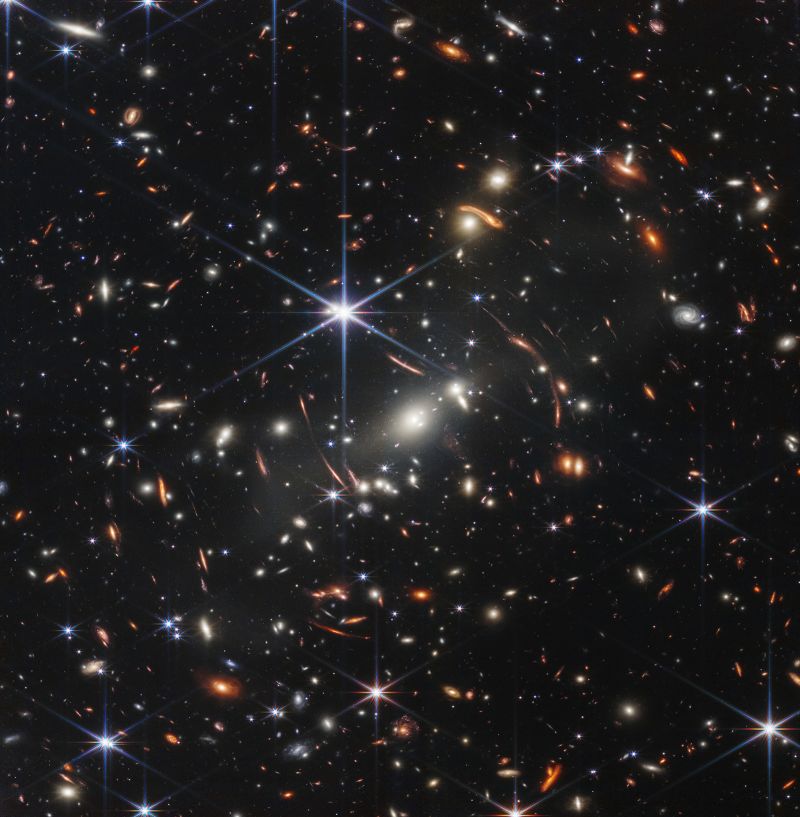Science
Related: About this forumWebb telescope spies a celestial sparkler among the universe's earliest galaxies
Ashley Strickland
By Ashley Strickland, CNN
Published 2:31 PM EDT, Thu September 29, 2022
(CNN)
—
The very first image captured by the James Webb Space Telescope is revealing some of the oldest stars and galaxies in the universe, including one that looks like a sparkler, according to new research.
Webb’s first stunning view was released by President Joe Biden on July 11 and it is “the deepest and sharpest infrared image of the distant universe to date,” according to NASA.
Webb’s first image shows SMACS 0723, where a massive group of galaxy clusters act as a magnifying glass for the objects behind them.
Called gravitational lensing, this created Webb’s first deep field view that includes incredibly old and faint galaxies. Deep field observations are lengthy observations of regions of the sky that can reveal faint objects.

NASA/ESA/CSA/STScI
The image of SMACS 0723 is "the deepest and sharpest infrared image of the distant universe to date," according to NASA
More:
https://us.cnn.com/2022/09/29/world/webb-telescope-deep-field-oldest-galaxies-scn/index.html
JoeOtterbein
(7,789 posts)Just, WOW!
Warpy
(113,130 posts)dimmed to the very edge of our ability to detect them by dust and gas.
No matter where they point a telescope for a deep field image, they find hundreds, thousands of galaxies.
Likely most of them have creatures peering back at us, barely able to detect the Milky Way.
yonder
(10,002 posts)That's a hugeness of which we have no knowledge or how part of it might be looking right back at us....with or without an "ability to detect." For any of us or them too.
.....![]()
Maybe we're all on some sort of infinite cosmic promenade?
BComplex
(9,078 posts)Less likely that we're the only colonized planet.
What a beautiful picture.
brush
(57,516 posts)electric_blue68
(18,009 posts)besides the mind boggling distances, and amount of galaxies we see zooming in, is seeing the spiral form.
There's one very obvious one in about a straight line to the right of the biggest 8 "pointed" star near-ish to the edge of the right side. We are seeing it "from above".
Then there are the ones in the upper left area at near side views where we see the arms "compressed" by perspective into "lines", or barely seeing the spiral arms; but we also can then see the central bulge.
There's a orangy spiral one near the "noon" straight up.",point " of the biggest star to the right with a nice tilt to it
Finally there maybe be one (oranged colored) near the upper right corner that's either part of the "lending" effect, two appearing very close to each other, or a simple barred spiral. That is - the central bar seems to have only one spiral swirling, curving outward and each barred end.
For all the decades I've been following astronomy; I didn't find out that our Milky Way Galaxy is actually a barred spiral vs a normal spiral galaxy until early this year, or late last year!